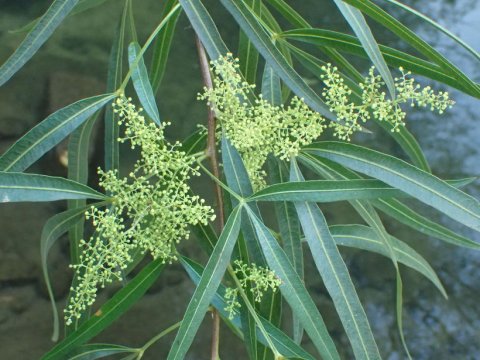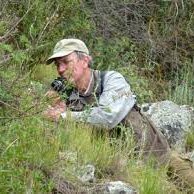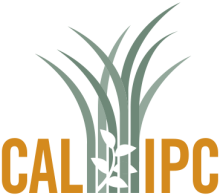Climate Matching Map
| Attachment | Size |
|---|---|
| climatematch-searsia_lancea-california-20251101.pdf (1.09 MB) | 1.09 MB |
1. Question 1
However, the populations at the Canary Islands are very small, only since 2013, and not appearing to naturalize (Verlove, 2020).
Malta (Mediterranean basin) populations also appear small and not necessarily significant (Malta Wild Plants).
Naturalization is Arizona seems pretty well established and is reported by several sources.
Arizona websites state:
- "In the Phoenix area, many horticultural plants are currently displaying invasive characteristics. Some of these plants include the tree Rhus lancea . . ." (Brock, Rhus lancea).
- "This recently naturalized tree is native to the southern part of Africa (T. Kinsey)."
- "Cultivated as an ornamental in the Sonoran Desert, escaping and naturalized in canyons in the Rincon and Tucson Mts. in Pima County" (SEINet, Rhus l.)
Naturalization in California seems to be erratic and difficult to quantify. Many CA records and observations are of solitary individuals and not necessarily supporting naturalization (Calflora and iNaturalist).
In California:
- The Jepson eflora states: "Naturalized" (Jepson Flora Project).
- "Re-seeds easily and naturalizes in urban landscapes and riparian areas" (Chambers, et al).
In review, Michael Chamberland asked for additional source documentation on the statement re naturalization in the US: I added three additional references.
2. Question 2
However, the populations at the Canary Islands are very small, only since 2013 and are not appearing to naturalize (Verloove, 2020).
Malta (Mediterranean basin) populations also appear small and not necessarily significant (Malta Wild Plants). These two climate matches, without significant naturalization, suggest a low degree of naturalization.
In review, Nikki Valentine suggested confidence could be rated as very high. Especially because several of the places included are considered similar climate. Excellent comment, confidence raised to Very High.
3. Question 3
AZ State University states briefly "African sumac has a moderate to high invasive potential in urban areas and surrounding riparian habitats. Basically, seedlings can germinate anywhere there is constant or seasonal sources of water. Some people find African sumac to be a source of allergies due to the pollen from male flowers during desert winters. (Martin).
USDA Southwestern Region states "This species generally occurs as a weed in wildland areas of the Southwestern Region rather than as an invasive plant". (USDA 2013).
A 2002 Sonoran Desert Conservation document states that the species is displacing native vegetation, but provides no documentation. It also states that it is highly invasive in urban landscapes (Invasive Species, Pima County).
In California, Calflora and the CCH combined report 56 occurrences, mostly in the South Coast region. However, of those with indications of abundance, counts or notes support invasiveness and instead suggest waifs or small naturalizations at this time (Calflora Searsia).
All of these lead to 'potential' invasiveness or somewhat anecdotal references to invasiveness, but with no supporting documentation. Until more documentation of invasiveness is found I cannot assign it an invasive score.
In review, Michael Chamberland suggested that Martin's use of the term "invasive" may be colloquial and not the same definition used by PRE. He also suggested additional source documentation, which I added. No change to the scoring.
4. Question 4
AZ State University states briefly "African sumac has a moderate to high invasive potential in urban areas and surrounding riparian habitats. Basically, seedlings can germinate anywhere there is constant or seasonal sources of water. Some people find African sumac to be a source of allergies due to the pollen from male flowers during desert winters." (Martin). Nonetheless, this is described as "potential" and not as currently invasive.
USDA Southwestern Region states "This species generally occurs as a weed in wildland areas of the Southwestern Region rather than as an invasive plant". (White, 2013).
A 2002 Sonoran Desert Conservation document states that the species is "displacing native vegetation", but provides no documentation and also states it is highly invasive in urban landscapes, again with no documentation (Anonymous, 2012).
All of these lead to 'potential' invasiveness or somewhat anecdotal references to invasiveness and no supporting documentation. Until more documentation of invasiveness is found I cannot assign it an invasive score.
In review, Michael Chamberland reiterated that the use of "invasive" does not necessarily follow the PRE definition. Agreed and noted. No change to the scoring is needed.
5. Question 5
CABI states: "R. typhina sprouts easily and grows rapidly, which can eliminate or reduce the abundance of many other species that cannot persist in the shade it creates. For this reason it has been identified as a weed or invasive in the USA and in the Czech Republic" (CABI: Rhus typhina).
Schinus terebinthifoius, Schinus molle and Schinus polygamus are invasive in CA and elsewhere in similar climates, but are rather distantly related. Phylogenetics place these other taxa fairly distant. (YinngYang, 2016)
Searsia lancea is best compared phlogenetically to the Rhus spp. which were segregated out as Seasia (a group of principally African species). Otherwise the genus Rhus as a whole is too large to draw correlations of invasiveness. Unfortunately, in the literature which predates the separation of Searsia (1943 & 1999) it is difficult to interpret which are now Searsia.
In sum, this question is best answered as No.
In review, Michael Chamberland correctly pointed out that R. typhina is native to much of the eastern U.S. I revised my statement and noted that it is native, but also invasive in neighboring regions. This is an example of a native plant, that can also act invasively in non-native regions.
Michael also pointed out that Searsia lancea is best compared to those Rhus which have been segregated out as Seasia (a group of principally African species). Unfortunately, in the literature which predates this separation it is difficult to interpret which are now Searsia. Agreed in full. No change to the scoring.
In review Jutta Burger, suggested additional reference sources, which I added. No change in the score.
6. Question 6
Regions with a high correlation of a CA climate match include South Africa (GBIF: Searsia and Stern 2008) and where naturalized in areas of New Zealand (GBIF: Searsia).
In review, Nikki Valentine suggested the confidence here could be very high. I agreed and moved the confidence accordingly.
In review, Jutta Burger requested additional citations for climate matching as well as regions that don't. I added the GBIF as a reference. No change to scoring.
7. Question 7
Anecdotal information in an Australian newspaper states "You can map an area out a hundred yards by a hundred yards, particularly where they are, and you'll just see that there's less and less of the natives in that area. They're just becoming a carpet of their roots running all over the ground and suckers coming up so there's just no opportunity for the natives at all." (ABC News 2016).
8. Question 8
The species propensity to root sprout likely demonstrates a high adaptation to fire, although I can find no documentation of this.
In review, Jutta Burger suggested a reference to its ability to resprout as evidence of fire adaptation, which I have added above.
9. Question 9
A S Africa newspaper article is not peer reviewed and could be suspect, but does quote a doctor and an arborist re significant allergic issues:
"Dr Neil Crouch from the KZN Herbarium, said the Rhus tree has been around for decades and causes an allergic reaction in people manifesting as a rash with welts “that drives you scatty”. He said he has also suffered a rash from this tree. You need more than an antihistamine such as Allergex, you need cortisone cream. The plant, its sap, pollen or sawdust causes the severe dermatitis. Often kids are mysteriously affected with a rash after swimming as a result of the pollen landing up in swimming pools.” He said the rash can occur a day or two after contact."
An arborist of some sort stated "Neil McGennis, a tree fella based in Kloof, said he has found the Rhus tree all over the upper highway area. When a tree needs to be chopped down, his staff wear masks and gloves. He said many people are not aware that this tree is toxic. “When kids climb this tree they get rashes.”
A Kloof’s Dr Michael Westbrook said the allergic effect of the Rhus tree is quite common, usually children are brought in to see him. “The rash has the appearance of plant dermatitis as there is an acute skin reaction when coming into contact with the tree. It presents as a stripy, raised rash (not a wheel) and I have treated hundreds of people over the years.”
Treatment for adults is a cortisone and antihistamine injection and if itching is excessive, then cortisone tablets and a cream are prescribed. A child is given a cortisone syrup, antihistamine and cream.
Another doctor, Dr. Westbrook, said "what often happens is that immediately after treatment, it appears as if the rash is healing, however, it can recur on another part of the body. Eruptions can occur days later without having further contact with the Rhus tree." (Dennis)
The plant does produce abundant pollen, which could cause allergic reactions to some people. Regardless, I will score this as a No, although with a Medium confidence.
In review, Michael Chamberland mentioned a lack of information on whether the plant is a health risk to humans or animals/fish. He also noted publications mentioning allergenic pollen as likely minor allergies and suggested a possible "no" here and a maximum confidence scoring of "Medium."
With additional research I was able to add more detail and references (as presented above) on both of these points. I retained the NO score, even with the references re allergic and dermal reactions. However the source of this report is a newspaper article and often these are not balanced. I found no mention of complications with grazing animals or livestock. This is a tricky question. Confidence moved to Low.
10. Question 10
The species in Africa appears to be associated with the margins of washes, rivercourses and of savannahs and there are no references to dense woodlands or thickets (Ebodes, Anonymous and SANBI).
The Australasian Virtual Herbarium had two instances of anecdotal evidence of possible thickets forming:
"Spreading tree 4-5 m tall, drooping willowy appearance. Part of a larger infestation spread 600 m along creekline NE to SW. Total area infested 5.5 hectares, varying densities and sizes. Thickets developing on floodplain at SW end of infestation." (Australasian Herbarium NSW1055336).
"About 200 plants /clusters of plants mostly saplings around 2-3 metres, but some mature trees, mainly growing under and around mature eucalypts" (Australasian Herbarium NSW857009).
Without better documentation and evidence of impacts to animal/livestock/human movement I am scoring No.
In review, Nikki Valentine provided to excellent additional references providing additional information, which is noted above. I retained my "No" score, but lowered the confidence to "medium".
11. Question 11
I am conflicted about the documentation of the plants propensity to sucker and spread by root sprouts versus its propensity to "reproduce" itself it that manner. Nonetheless, I am scoring a Yes, since the species apparently does at least have this ability. But I am offering only a Medium confidence level, due to this uncertainty.
In review, Lynn Sweet pointed out that because this sp. can reproduce vegetatively and that ability is document, that it may warrant a "Yes" answer. I agreed, but assigned only a medium confidence, as I am still uncertain of the plant propensity to do this in a natural setting.
In review, Nikki Valentine correctly noted that I had omitted references on some of my comments. Those are now added. No change in the scoring.
12. Question 12
In review, Jutta Burger requested additional references for or against. Without this, I lowered the confidence to "low".
13. Question 13
14. Question 14
At least two references (below) say "abundant seeds", but that is not quantifiable.
My own observations of trees in August 2021 are as follows:
Approx 10 semi-mature trees examined; trunk diameter ABH ca 6in. Trees were in full fruit. Two trees that looked representative were examined and seeds counted. Approx 20% of the canopy (divided vertically) were counted of fruit (1 seed per fruit). That total was then multiplied to generate a sum value for the entire tree (x5). From this method I estimated ca 1,600 seeds on one tree and 1,200 on another. Again, these were semi-mature trees, probably well under 50% of the biomass of a mature tree. (Calflora Searsia)
Additionally, the images of many plants on Calflora show heavy flower and seed production, suggesting >1,000 seeds on a mature tree is reasonable. (Calflora, iNaturalist)
In review, Lynn Sweet commented on using my own research and citing myself in my own evaluation. She supported it, as long as it was reasonably documented and credible. I edited my documentation accordingly. No change in scoring.
In review, Michael Chamberland reminded me of the 2010 HEAR review. I did review the HEAR assessment, but could not reference the original document at the URL provided or via a search. It was second-hand information and did not seem conclusive. I remained with my score.
In review, Jutta Burger suggested a reference for abundant seed production. I referenced some sources, none are are research driven or quantifiable. But the number of sources (and others not referenced) seem great enough to score this a "Yes". Nonetheless, I reduced the confidence to Medium.
15. Question 15
"Very easy to germinate from seed." (Martin)
One of the more interesting references is a paper discussing and contrasting bird ingested seeds vs. non-bird ingested seed germination and speed. The conclusions were that bird ingested seeds (seeds through the birds gut) had significantly increased germination success and speed of germination for this sp. With passage through the gut = ca 28% germination, without passage through the gut = ca 8% germination. This complicates the answer. Assuming one agrees that birds are significant seed dipersers then this is a YES, if not it is a NO.
Although strongly reported as easy to germinate, a consensus is lacking re whether the germination rate is above 25%. Scoring Yes, but reducing my confidence to Medium.
In review, Michael Chamberland mentioned the literature may not be considered "highly credible or reviewed" to be given a "very high" confidence ranking. I added a new citation re germination related to bird ingested seed. With this additional information I retained the Yes score, but reduced the confidence to Medium.
16. Question 16
A few images show young plants in fruit (incl the Calflora and iNaturalist references). Although these do not quantify the 'five years' threshold, they seem likely. Leaving it with only medium certainty, in lieu of published documentation.
I feel confident enough with the two, albeit sparse, records above to offer a Yes score, but with a Very Low confidence.
In review, Lynn Sweet suggested perhaps this question be left unanswered, due to lack of information.
Lynn's note and suggestion is well received. Regardless, I feel that based upon even just the two records cited and the nature of related Anacardiaceae that this nonetheless deserves a Yes score. It is a soft Yes, and I have reduced the confidence to Very Low.
17. Question 17
Calflora indicates blooms in the months of March, April, May and June, although not necessarily on the same trees (Calflora).
Jepson eflora states the same months (Jepson). Scoring Yes.
18. Question 18
Although this is a secondary report without published documentation it is from a reliable Australian Invasive Assessment. And Barbara Tellman, the source quoted, is a well known Arizona author and invasive plant biologist.
Fruit a depressed-globose drupe 4–6.5 mm in diameter, often slightly asymmetric, dull yellow to greyish or brown, with fleshy pulp.
An African plant database states "The flowers have a sweet smell and are visited by insects such as bees, which serve as pollinators. The fruits are eaten by birds such as guinea-fowl, francolins and bulbuls, which are probably the main seed dispersers." This is somewhat anecdotal and even includes "probably", but of interest (PROTA4U).
Further, as this fruit contains a fleshy mesocarp, this mesocarp is frequently sought after by birds in many species of Anacardiaceae, the endocarp and viable seeds pass through the gut of the bird and are dispersed. In the same journal article this statement seems to confirm a high likelihood of bird dispersal: "Germination trials with defecated seeds of five plant species compared with the manually depulped seeds showed that only Searsia lancea had significantly higher seed germination success and improved germination speed after passage through the bird gut . . ." (Vukeya, 2021).
19. Question 19
This reference is somewhat confusing, as it is unclear if the mode of transport is referring to the birds or the water in the washes. Although this is a secondary report without published documentation it is from a reliable Australian Invasive Assessment. And Barbara Tellman, the source quoted, is a well known Arizona author and invasive plant biologist.
However, fruit morphology as described, does support buoyancy in water and thus potential (probable?) water transport: "Fruit a depressed-globose drupe 4–6.5 mm in diameter, often slightly asymmetric, dull yellow to greyish or brown, with fleshy pulp" (PROTA4U).
Furthermore, the fruit is indehiscent and the endocarp and seed is surrounded by a fleshy mesocarp, which almost guarantees buoyancy (Vukeya). Lastly, the fruit (a drupe) at 4-6.5mm in diameter (Vukeya), is rather large for the small and light seed of ca 3.5mm (my personal measurement), again implying a high likelihood of buoyancy and water dispersal.
My own buoyancy test on 8-15-21 is posted briefly as (Vanderhoff, Calflora). In it, the fruits were strongly buoyant, after 24 hours all fruit still well above the water line.
Scoring this as a Yes, but with low confidence, without better documentation.
In review, Jutta Burger requested a description of features of seed/fruit that are / are not conducive to it being carried by water/wind. I added morphologial information above as well as results of a buoyancy test. No change to scoring and retained the Low confidence, although it could even go to Medium with this additional detail.
20. Question 20
Evaluation Notes
Added updated climate match map, cleaned up references for new website (J Burger 11/1/2025)








